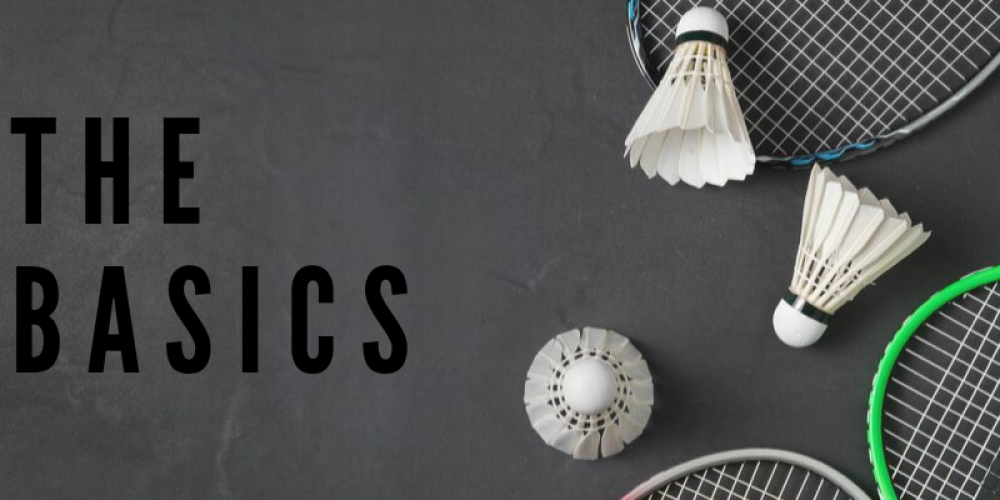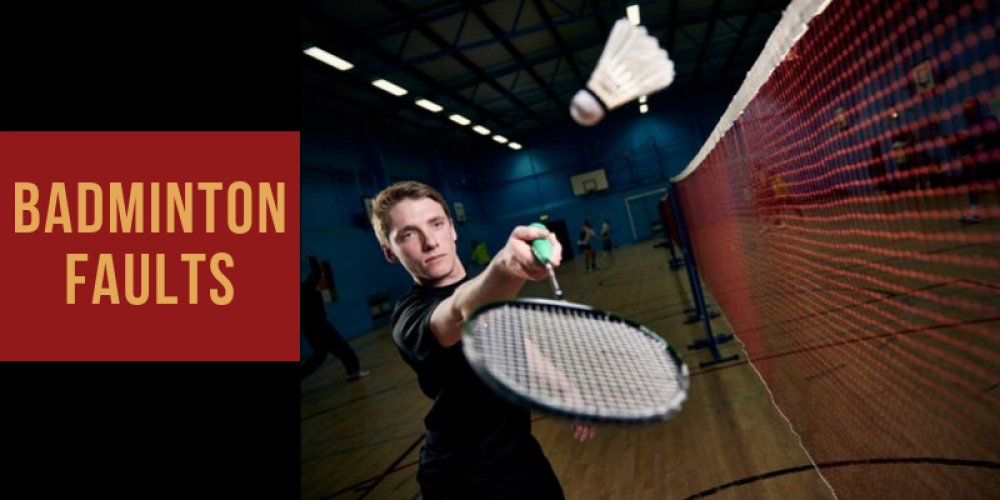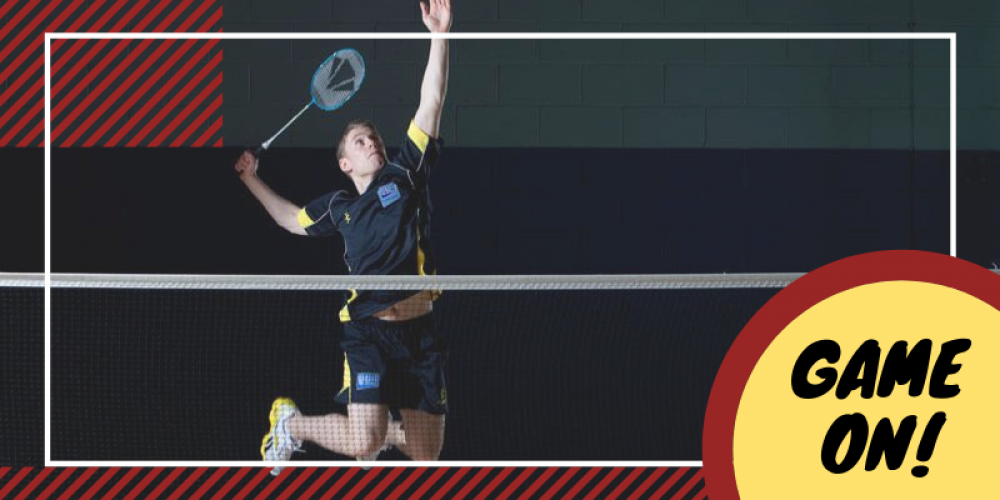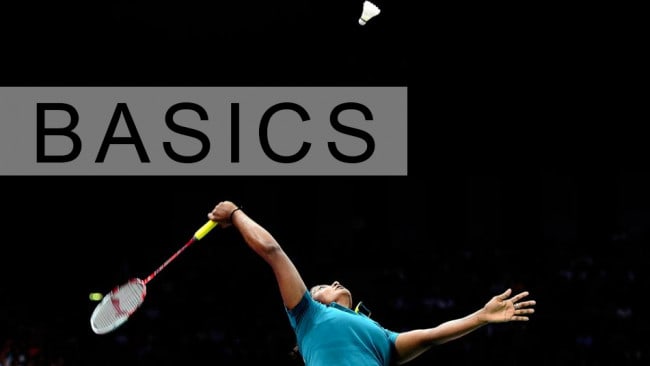
Badminton is very unusual amongst the racket sports in that it uses a shuttlecock rather than a ball. As a result, the game is played on the air, i.e. without the shuttlecock bouncing (which it can’t). This means that you can play badminton recreationally on just about any surface (as long as you can move about on it safely), which makes it great for casual players. As an added bonus, it’s really easy to grasp the basics of badminton so beginners can soon join in the fun confidently.
There are also plenty of opportunities for players who want to take the game more seriously. While badminton in the UK has a lower profile than tennis, its profile took a big step up in 2004 when Gail Emms and Nathan Robertson won silver in the Athens Olympics. It has been growing ever since and there are even professional opportunities, largely thanks to the game’s high profile in Asia.
The Basics of Playing Badminton
Badminton can be played as either a singles or a doubles game, the courts, rules and scoring are essentially the same.

Badminton is for players of all ages, shapes and sizes
Badminton can be played recreationally by anyone and even at professional level there is room for players of different heights and physiques. Badminton isn’t really about strength (although at a serious level it is about stamina). It’s about reading the game conditions, adapting them and trying to control them.
At a beginner level you can play badminton while only moderately fit. Fitness will become more of an issue if you decide to take the game seriously as you will need to move around the court at high speed, however that can come later, if you wish.
Badminton equipment is very affordable
Basically all you need to get started in badminton are regular sports clothes and trainers (racquetball shoes are a good choice as the soles are similar to proper badminton trainers), plus a racquet and some shuttlecocks. Depending on where you are playing, you may need to set up your own net, however, this is a one-off purchase and very inexpensive.

Understanding a badminton court
A badminton court is 6.1m by 13.4m. The net is strung widthways at 6.7M and is set at a height of 1.55M. The boundaries of the court are indicated by lines and there are further lines marked on the inside of the court to indicate key areas.
There are four lines running across the width of the court, parallel to the net. These are at 1.98M from the net and 0.42M from the back of the court (so two lines in each half). Players must either serve or receive serve from behind the line nearest to the net.

NB: Players must be completely behind the lines to serve or receive. If any part of their body is over the line, it’s a fault and their opponent wins the point.
In a DOUBLES match, a server must place the shuttlecock so that it lands in front of the inner back line (assuming the opponent does not hit it). In a SINGLES match, a server may send the shuttlecock to the very back boundary of the court (but not beyond).
There are a further three lines which run lengthwise down the court, so at right angles to the net. One divides the court into halves, so it is positioned at 3.05M from the corner and only extends to the front service line. The other two are 0.42M from the long side of the court and these lines run the full length of the court.
The short line in the centre indicates the areas in which a player is to serve or receive. In a DOUBLES match, a server may place the shuttlecock so that it lands anywhere within the vertical boundaries of the court. In a SINGLES match, the server must place the shuttlecock so that it lands within the inner boundary, i.e. at least 0.42M from the outer boundary.
Once the serve has been made, the shuttlecock may land anywhere in the court in a DOUBLES match and anywhere in the inner court (i.e. at least 0.42M from the outer boundary) in a SINGLES match.

The fundamentals of game play
As a rule of thumb, a match is started by tossing a coin and whoever wins the toss can choose to serve or to receive. There are other methods, like tossing a shuttlecock in the air and seeing where the heart points, if you’re playing recreationally just choose one to suit yourself.
The first serve is always from the right-hand side of the court to the left-hand side of the opposite court. It must clear the net completely without making contact.
Each player then attempts to hit the shuttlecock over the net before it hits the floor. Shots must go cleanly over the net without making contact with it. The shuttlecock must also stay within the boundaries of the playing area.
When opponents trade shots backwards and forwards it is called a rally. A rally continues until either the ball hits the net or lands on the floor or a player commits a fault.
In a singles match the player who wins the rally takes the service and they change service sides with each new point played. So, for example, if the first match is won by the server, they serve for the second point, but they serve from the left-hand side of the court. If it’s won by their opponent, then the opponent serves and since they were receiving from what (for them) was the right-hand side of the court last time, they are now serving from what (for them) is the left-hand side of the court.
A doubles match works basically the same way, but players take turns to serve. So, for example, if player A opens the game (serving from the right) and their side wins the rally, then Player A will continue to serve, switching sides each time as in the singles game.
If, however, they lose the rally, then one of their opponents will take over service. When Player A and Player B get the service back, it will be Player B’s turn to serve. If Player A and Player B’s score is an even number, Player B will serve from the right and if it is an odd number, Player B will serve from the left. Player B will continue to serve for as long as Player A and B continue to win the rallies, switching sides each time as in the singles game.
Regardless of whether you are playing singles or doubles a full badminton match consists of three games, each played to 21 points. If a game is tied at 20 points each then a side needs to gain a 2-point lead to win unless the game proceeds to a tie at 29 points each in which case the side which takes the next point wins the game.

Badminton Faults
If you want to play seriously, you will need to learn the ins and outs of badminton faults. If, however, you just want to play recreationally, then here is a quick run-down of badminton faults.
Contact faults
The shuttlecock must not touch the net at all and it can only touch your body during service, in this context, your body includes your clothes.
Over the Net Fault
You can only hit the shuttle when it is on your side of the court. It’s fine if your racket goes over the net as part of the follow-through AFTER you have hit the shuttlecock, but if you hit the shuttlecock while it is still on the opponent’s side of the court, then it is a fault.
Service Fault
If you take badminton at all seriously, you are going to have to get to grip with this one in depth. For the purposes of getting started however, when you serve, your racket head must be pointing down when you hit the shuttle, the contact must take place below your waist and your racquet must be swung upwards. Any deviation from any of these points is considered a fault.
Receiver Fault
When receiving serve you can only move your feet after the server has made contact with the shuttlecock.
Double Hit Fault
You can only hit the shuttlecock once. In doubles it’s once per side rather than once per player so if both players make contact with the shuttlecock, even by accident, then it’s considered a double hit.
Getting started playing badminton
In principle, you can check out the various player organizations, namely Badminton England, Badminton Scotland, Badminton Wales, Ulster Badminton. In practice, as badminton is one of the UK’s most popular recreational sports, the chances are you’ll be able to find clubs, coaches and/or other recreational players just by having a look on the internet for your local area or asking around nearby sports venues.

Getting to grips with badminton technique
If you just want to play badminton for fun and fitness, then, honestly, you don’t have to worry too much about technique. The three key points to remember are as follows:
- The force of a badminton shot comes from the shoulder but the control comes from the wrist, so you want to hold your racquet as loosely as possible so your wrist is relaxed and has maximum freedom of movement.
- Hit the shuttlecock as early as you possibly can.
- Try to return to the centre of the court after each shot you make.
If, however, you want to get good and hold your own in proper, competitive games, then it would be a very good idea to work to finesse your basic badminton techniques. In particular, you want to look at the following points:
- Your stance
- How you grip your racquet
- Your serve
- Your footwork
- Your strokes (how you swing your racquet)
- Your shots (how you hit the ball, there are only three basic shots in badminton, clearing or lobbing, drop shots and smashes).
- Your net play
The good news is that a bit of practice is usually all it takes to get competent at basic badminton techniques. Obviously, if you want to get to the intermediate and advanced levels then you’re going to need to put in a lot more work. In either case, however, the key is to practice the right way. Ideally you’d want to work with a coach, but if that’s outside your budget, you could try asking for the help of a more experienced player or, at a pinch, look for videos now you now the important search terms.

The basics of badminton strategy
Similar comments apply to learning badminton strategy. As a beginner there are really only two golden rules.
- Avoiding losing points is as important as winning them. In other words, know what the rules are and follow them.
- Focus at all times, especially when serving and receiving.
As you progress, however, there is much more emphasis on playing both the situation and the player. At the intermediate stage you will look at how to adapt to players who are taller or shorter than you, controlling and changing the pace of the game and choosing the right shot for the right situation.
If you advance, you’ll dig deeper into the nuances of badminton and eventually in a position to analyse your opponent’s play in real time so you can try to dominate and/or deceive them, taking advantage of their weaknesses and forcing them into errors.
In short
Badminton is high speed and low impact, which makes it a great choice for people who want a fun and sociable way to keep fit. Although it’s mostly played for recreation, there is a fairly substantial competitive scene in the UK and it’s growing all the time.
If you’re a parent of a young child, then badminton is not only a fairly safe and affordable way for them to get the exercise they need, but the sport’s growing profile could open up some interesting opportunities for them in later life. Even if they don’t want to turn professional they could still enjoy a career in the sport in some other capacity, such as coaching.
Katie is our resident Editor and extremely is a well-respected voice in the world of fitness. Katie has a first-class Hons degree in Journalism and is proud to say that she has written leading entries featured in the biggest media outlets including Vogue, Women Health Magazine and CoachMag. Great outdoors and animal lover and always on the go


![How to Get into Badminton – [Professional Guide]](https://fitnessauthority.co.uk/wp-content/uploads/thumbs_dir/how-to-get-into-squash-omsovylai7kp3nuadbptag2vjvn6e4gz6nl35i31h8.jpg)
![How to Get into Badminton – [Professional Guide]](https://fitnessauthority.co.uk/wp-content/uploads/thumbs_dir/Collab-Space-Central-omsor5mzkozxretif8ygjnq28zbn1ted6vjqul7ha4.jpg)









